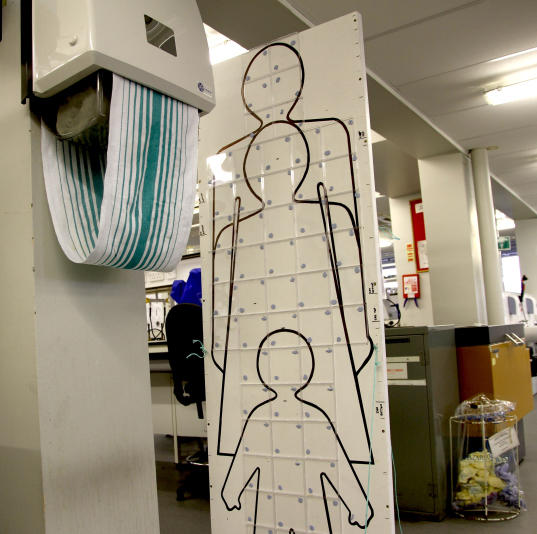Do hand dryers spread viruses in public bathrooms?
Posted on January 5, 2016 by Anand Jagatia
Seeing someone leave a public toilet without washing their hands is enough to make your stomach turn, but how someone actually dries their hands also has important implications for public health, according to recent research from the University of Westminster.
The study found that jet air dryers (which use a thin layer of air travelling at high speed to remove water) spread viruses around a washroom much more than paper towels or more traditional warm air dryers.
“We found that jet air dryers are incredibly efficient at dispersing micro-organisms into the environment,” says Dr Patrick Kimmitt, lead author on the study. “They are good at getting your hands dry. But where do the microbes go once they leave your hands?”
Patrick and co-worker Keith Redway compared how virus particles were splattered to different distances and heights during hand drying, and also how long viruses remained in the air afterwards. They used a type of virus called a bacteriophage, which infects and destroys bacterial cells.
The researchers washed their hands in a (harmless) solution of bacteriophage before drying their hands. They were then able to detect the dispersal of the virus using arrays of agar plates that had E. coli bacteria growing on them. If a virus came into contact with one of the plates, it would infect a bacterial cell, leaving a visible area where the bacteria had died, known as a ‘plaque‘. By counting the number of plaques, they could work out how many viral particles were dispersed.

Measuring splatter at different heights right next to the device, jet air dryers produced (on average) 1,300 times more plaques than paper towels, and 60 times more than warm air dryers. The authors note that the maximum number of plaques were found between 0.75 and 1.25 metres – about the height of a small child’s face when standing next to a parent. Jet air dryers also aerosolised the virus much more effectively than the other two methods, with particles remaining in the air for at least 15 minutes after drying. These may eventually settle and contaminate other surfaces.
The hand washing simulations used relatively high concentrations of bacteriophage virus so that they could be easily detected. But according to Patrick, they aren’t outside the realms of possibility for what someone could have on their hands when using these devices. The winter vomiting bug, for example, is shed in high numbers in stools, and has a low infectious dose. This, plus the fact that viruses can survive in the environment for anywhere between a few minutes to a few weeks, means good hand hygiene is vital for preventing infection.
Using soap and water is a very good way to effectively remove microbes from your hands, but hand drying is also an important part of hand hygiene (wet hands are much more likely to transfer microbes to other surfaces). On one hand (no pun intended), jet air dryers are actually very quick and efficient, so people are likely to leave a bathroom with drier hands. But this isn’t the only measure of how hygienic a device is, and things like microbe dispersal should be taken into account.
There are also other factors to consider – for example paper towels require a bin, which needs to be emptied and kept clean. But, overall, the team conclude that paper towels are the best option in certain settings. “In places like hospitals or the food industry, where people are likely to be exposed to pathogens, we need to think carefully about the kind of drying devices used,” says Patrick. “The next step would be to look at whether our model of dispersal is actually happening in real environments with real pathogens.”
Kimmitt, P., & Redway, K. (2015). Evaluation of the potential for virus dispersal during hand drying: a comparison of three methods Journal of Applied Microbiology DOI: 10.1111/jam.13014
